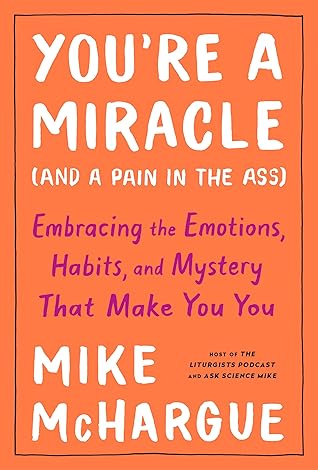More on this book
Community
Kindle Notes & Highlights
Read between
June 30 - June 30, 2020
According to research, those groups also search for porn more often than other groups, while the religiously unaffiliated predict lower rates of consumption.
Shame creates taboos around sexual desires and drives, and taboos prevent people from reaching out to their communities for support and discussion. And this phenomenon extends way beyond our relationship with sex.
Most communities shame people for curiosity about taboo topics—or overcompensate by encouraging behaviors that are risky or dangerous.
We’ve trained people to view their behaviors as personal, moral failures. But that view isn’t just limited—it’s often flat-out wrong.
Only when rats were deprived of normal social interaction did they display signs of addiction.
When you’re facing a compulsive behavioral loop, don’t just struggle with your will. It’s far more effective to interrupt and refocus.
if I interrupt that focus and decide to walk around the airport instead, I find I skip the slice almost every time.
punishment and prohibition are really ineffective. They train people to hide their behaviors, not to alter them.
Openness in community is a salve that helps us heal.
Something about them seeing my car and not thinking less of me was freeing. It made it easier to toss out a bag when I got back to the office—if dozens of bags didn’t result in social rejection, how could one?
I started to prioritize lunch with other people.
Acceptance beats shame every time.
One of those activities was a psychodrama, also called a “sculpt,” in which the group reenacts an event from one person’s past in a safe, supportive setting.
People around the room were telling the chair, as strange as that sounds, that what it had done was wrong, and that it made them angry.
the man’s painful memories had echoes in my own life.
I’m guessing there have been moments in your life when you, too, were surprised and overwhelmed by your feelings.
fear and anger are the most powerful and ancient emotions in our brain, and they often pop up in ways that make us feel out of control.
why do our brains create anxiety in the first place?
we approach our feelings with the wrong expectations. We’ve been trained by our culture to believe that happiness is the best feeling, and that life is about trying to achieve it.
What if our distaste for these other emotions is making us miserable?
cutting-edge model for understanding emotions,
Accelerated Experiential Dynamic Psychotherapy (AEDP).
core state? That’s the frame of mind humans inhabit when they’re at ease.
the kind of calm that makes you curious and centered.
remember why you have a brain. It isn’t so that you can experience core state, or happiness. You have a brain so that you can survive.
your feelings get activated in a way that motivates you to act. (We call this “arousal”
When that happens, you leave core state and go into something called core affect.
Every person in every culture is capable of these basic emotions: anger, fear, happiness, sadness, disgust, surprise, sexual arousal.
emotions served as a mechanism for our brains to make decisions quickly.
Sadness, on the other hand, tells us something is wrong, but not in the imminent manner of fear or anger.
We feel sad when something or someone we value is missing,
Sexual arousal is different from the other emotions in that it changes over time—the
Its job, of course, is making sure humans make more humans. It’s nice for bonding too.
all of our core emotions are healthy when processed fully, few people make it to adulthood without picking up cues that some of their feelings are wrong.
When a small child gets angry, the response of others will shape how the child relates to her own anger for the rest of her life.
we learn to inhibit our basic emotions.
our core affect moves to an inhibiting affect.
Inhibiting affects are feelings like anxiety, worry, ...
This highlight has been truncated due to consecutive passage length restrictions.
more often in our culture, our basic, healthy emotions are met with a social reinforcement to repress them.
we learn to stop them by feeling anxious, worried, guilty, or ashamed.
When I feel shame, I pause and ask myself where the shame is coming from, what belief is driving it.
I’d never felt anxiety before I evicted shame from my life, but now I’m making up for lost time.
defensive affect is anything we feel or do to escape anxiety, worry, guilt, or shame without processing the original emotion or stimulus.
Humor helped me transform my fear of social rejection (I’m a failed author) into a social win (I’m a funny podcaster). That’s an important point: Defensive actions aren’t inherently bad.
Our defenses become a problem only when they trap us in the cycle of inhibiting and defensive affects.
asked me what stopped me from crying, I paused for a moment, and then told her the truth: “I’m afraid that if I start, I will never stop.”
Our feelings aren’t here to break us. They’re here to help us—even heal us.
Feelings are meant to have a wave action. They naturally progress, crest, and recede.
On the other side, I’ll often realize what made me sad.
the feeling of sadness doesn’t break me; it teaches me. I’m learning to trust it.


